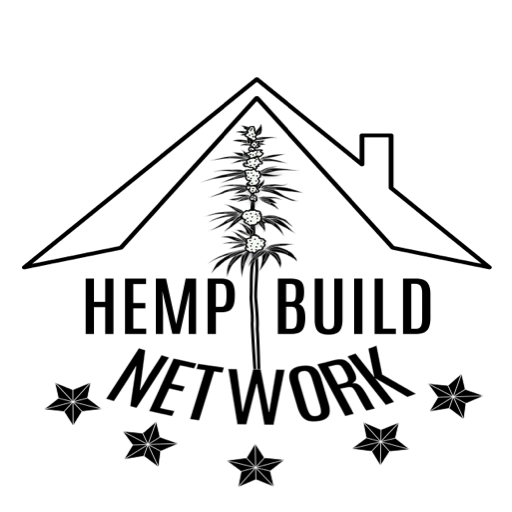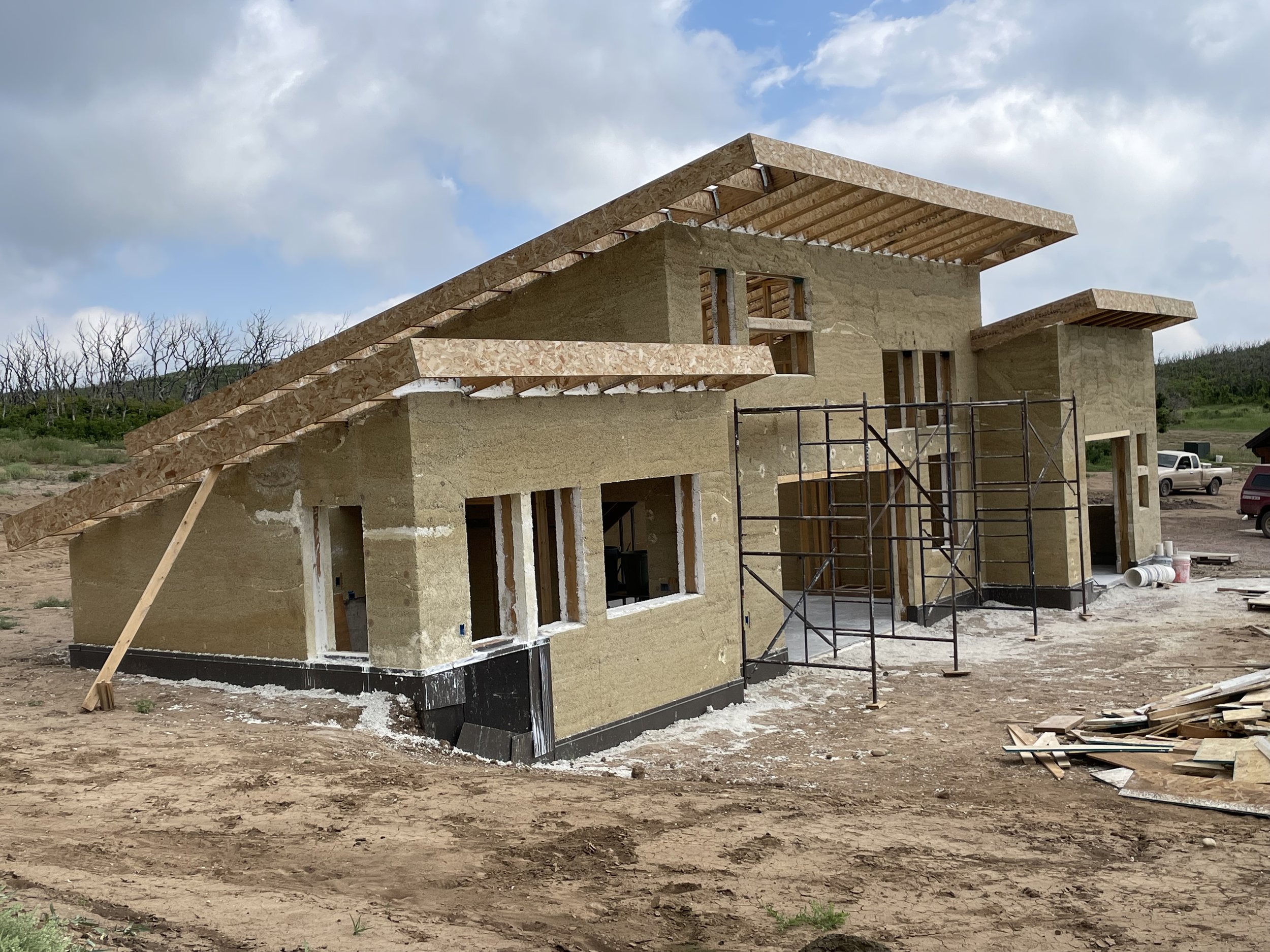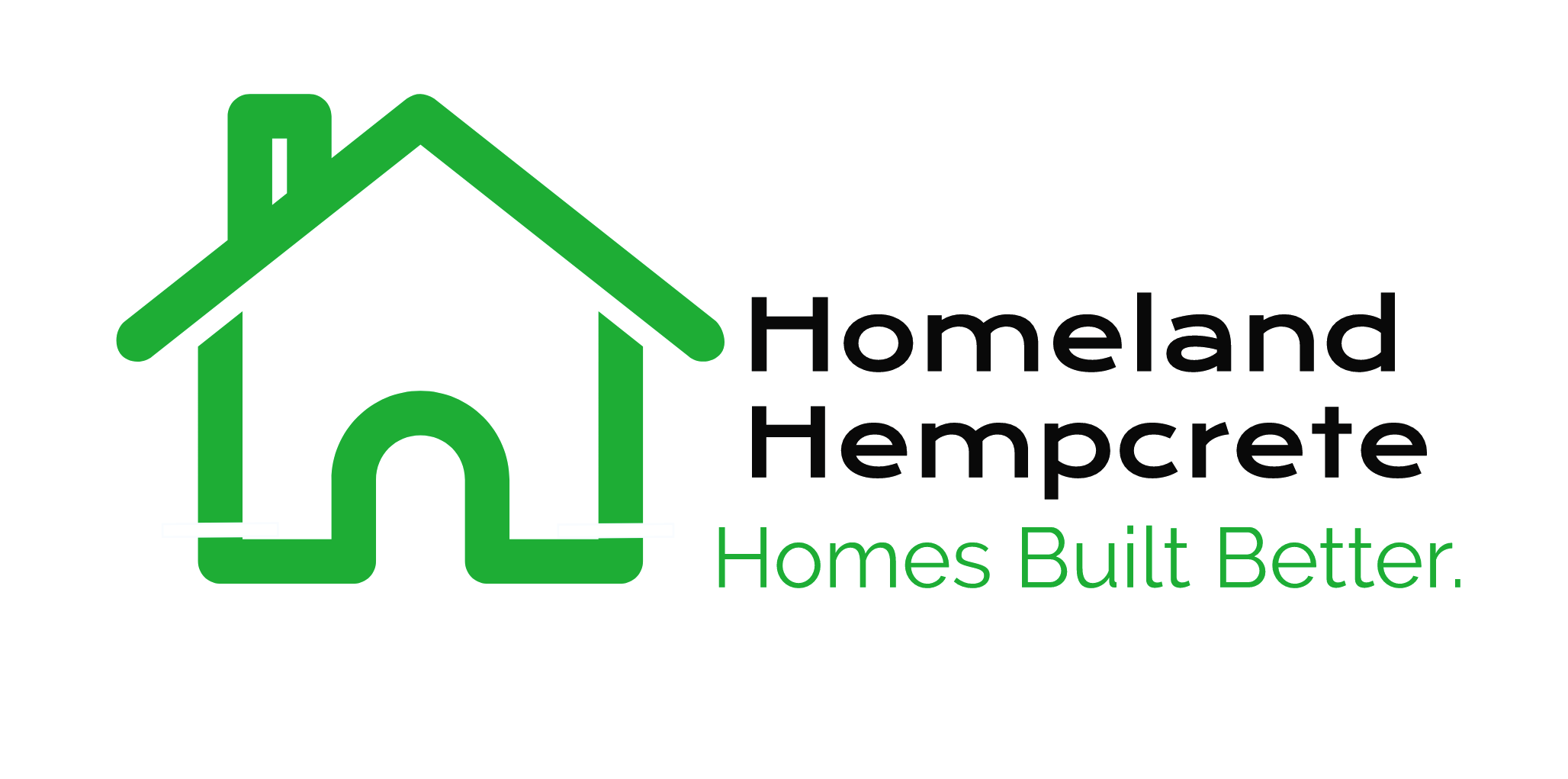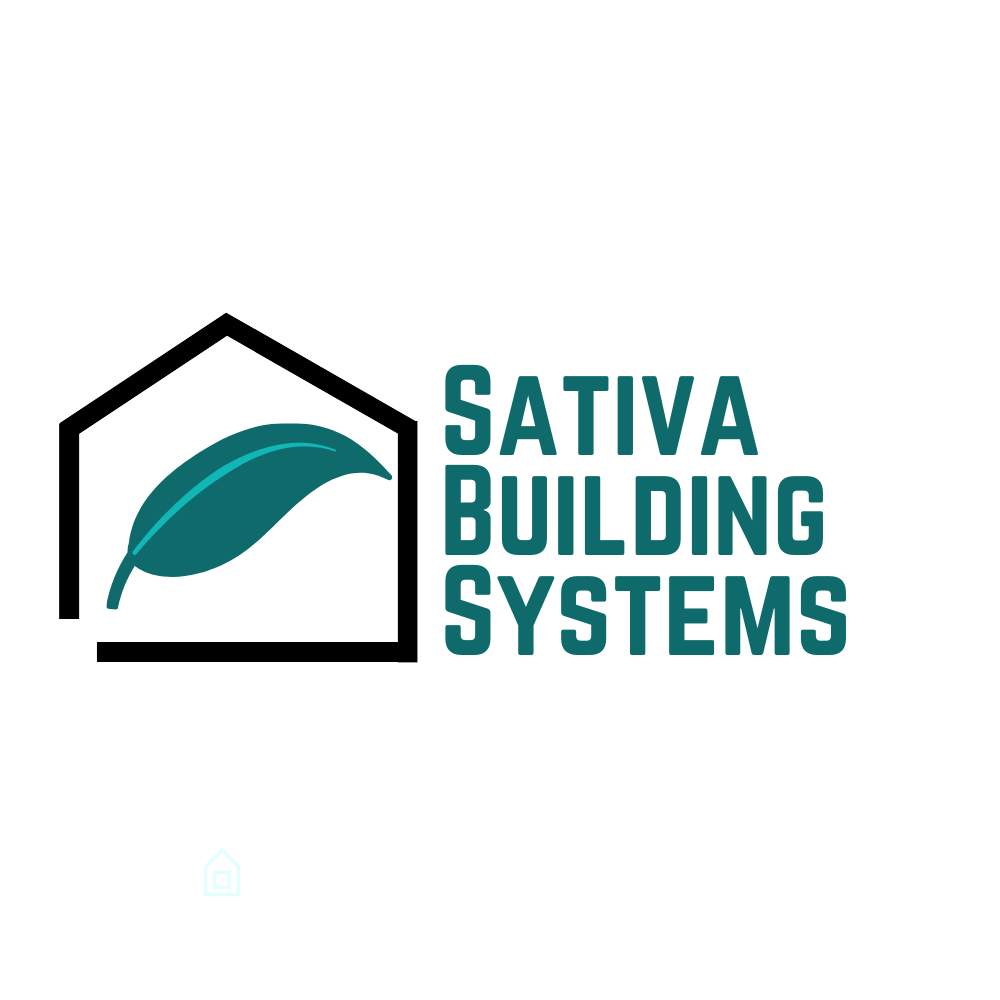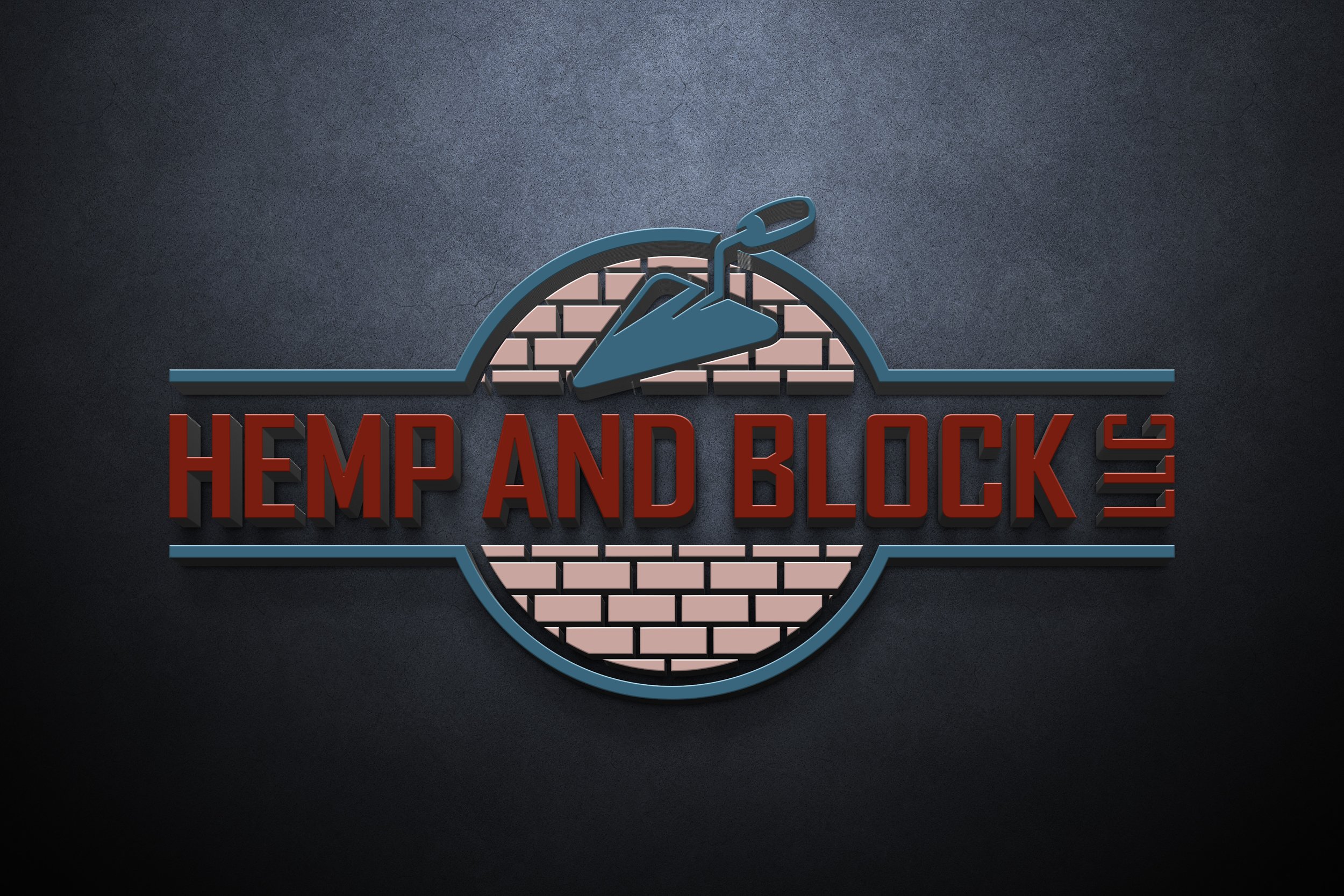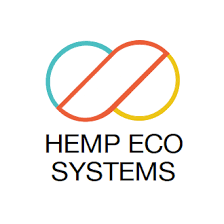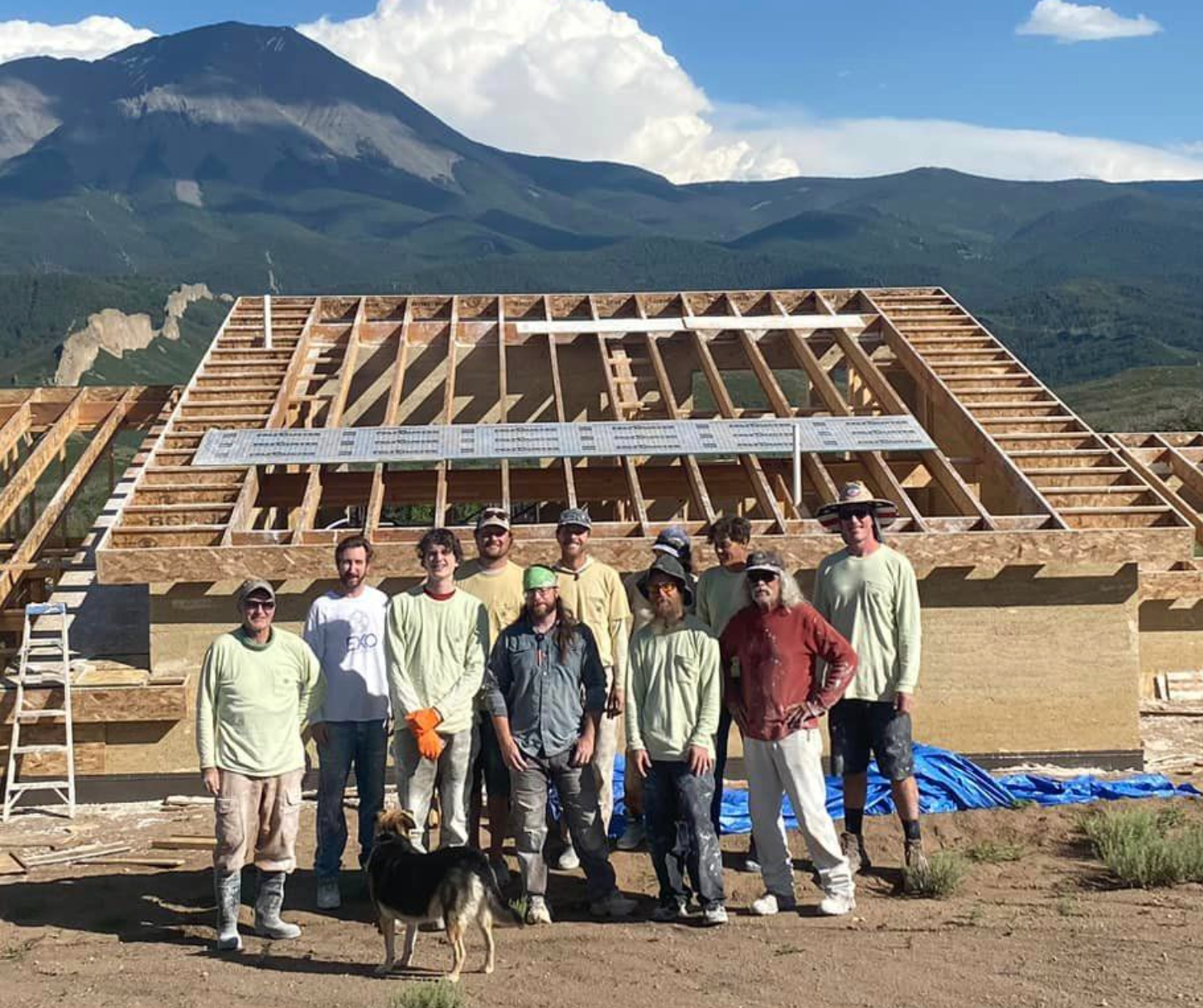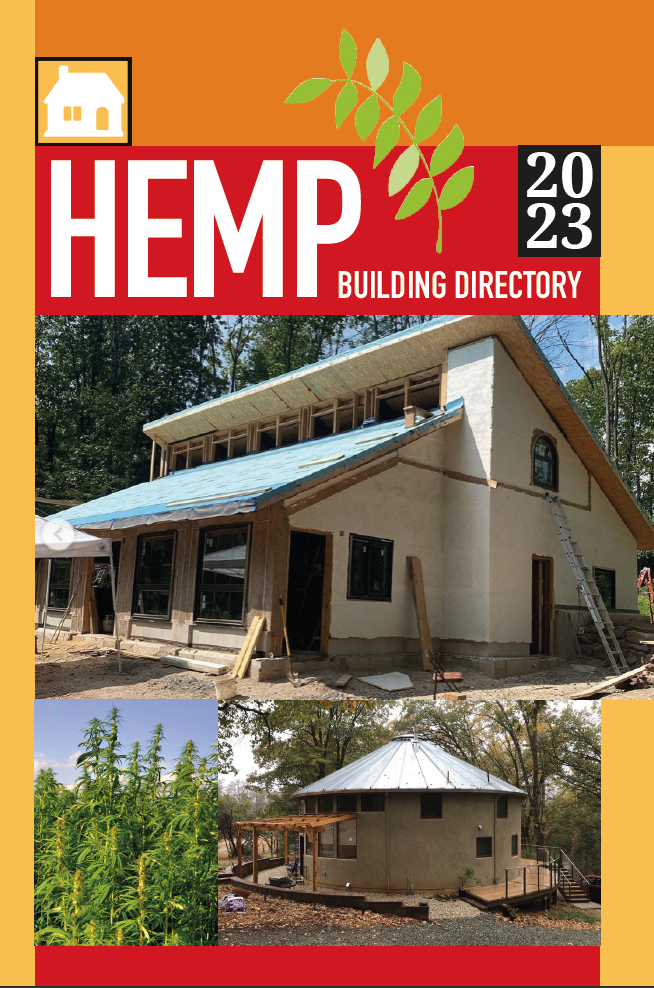CO Mountain Hempcrete Home Draws Curiosity in Wildfire Zone
Hempcrete home owner and designer Aliyah Field poses in the window of her newly hemped home outside La Veta, CO. Photo by Jean Lotus
By Jean Lotus
A new hempcrete home in the southwestern Colorado mountains drew interest from local townsfolk because of its wildfire resistant property, the owner said.
Aliyah Field’s new passive-house design and matching hempcrete garage/greenhouse is perched outside La Veta, CO in a mountain neighborhood that still shows scars of a recent wildfire.
“In Colorado our primary natural disaster to worry about is fire,” Field told HempBuild Mag, pointing out some charred shrubs dotting her 35-acre property. “As you can see, a forest fire has been through here not that long ago. One of the things that really attracted me to hempcrete is its fire resistance” she added.
Word about the build spread quickly around the area when she started construction of the greenhouse last year and neighbors have gotten in touch, she said. “I've definitely sparked some interest in the area. We'll see if anyone else in the neighborhood jumps on the hempcrete bandwagon,” she said.
Passive house design was used to create the new 1,500 sq. foot hempcrete build in La Veta, CO. Photo by Jean Lotus
The new house was sourced with all-local materials and that shows the promise of the local hemp economy, said Phelan Dalton, founder of the Lafayette, CO-based Hemp Building Company.
More than 20,000 lbs of industrial hemp in the walls of the house was grown in the nearby San Luis Valley, processed by Global Fiber Processing in Monte Vista, CO and trucked to the La Veta site, keeping the entire hemp materials supply chain within a radius of 75 miles. Lime was sourced from the midwestern USA and a pozzolan additive was imported from Europe.
The Hemp Building Co. crew took 15 days to fill the 12-inch walls with hemp-lime. The inner and outer walls will be covered with lime plaster. A crew from ages 17-71 worked on the hempcrete walls over three weeks on the job, Dalton said.
Using hempcrete for a wall infill means owner Field — working as her own general contractor — did not have to coordinate crews of subcontractors to install the typical multi-layer wall assembly of siding, insulation, sheathing, waterproofing and drywall.
Also notable on the construction site: No dumpster filled with construction materials destined for the landfill.
Field said she was intrigued by hempcrete’s performance properties and jumped at the chance to try it when she heard builders were using it in Colorado.
“I originally hadn't even considered it cause I thought it wasn't even viable in the United States yet,” she said. She designed the house before she made the choice of hempcrete walls, she said. “If I had to do it again, I would probably make some changes.”
Field got engineering help from Wellington, CO-based natural building engineer Mark Benjamin at Crown Jade Design and Engineering, who’s worked on multiple hemp projects in the state. With engineering advice, permitting was not a problem in remote Huerfano County, with a population of fewer than 7,000 residents.
“The county's been really great, actually,” Field said. “They haven't said yes to everything I've asked them, but they've been very easy to work with.”
Field works as both an architectural designer and potter, two areas of expertise she combines in her company Adamah Design, named after a Hebrew word meaning “of the earth.”
Field says her specialty is designing “smaller, smarter” living spaces that maximize efficiency.
The 1,500 sq. foot home has a high ceiling and includes a pottery studio, a 1.5 baths and a bedroom and spare loft bedroom and a root cellar. The home has no gas hookup. Solar power from panels on the garage fuels the radiant heating system under the floor and will (mostly) power her electric kiln.
Hemp Building Company founder Phelan Dalton and his crew between ages 17-71 installed hempcrete on the home in 15 work days. Photo by Jean Lotus
Field used passive-house principles to design overhangs that would shade the house in the summer and allow south-facing windows to absorb heat in the winter.
The view from the home includes one of the landmark Spanish Peaks, called “Wahatoya” by the Ute, Comanche, Apache and earlier indigenous residents, meaning “Breasts of the Earth.” Geological lava vein formations visible from the home resemble narrow free-standing dinosaur-like spines.
Arched doorways provide a less angular look. Field said the view and geology help inspire her design choices, “I'm very much trying to draw from the landscape and the surrounding terrain.”
The walls will provide an R-value of about 2 per inch, and the hemp insulation surrounds the house in a cozy blanket called a “monolithic envelope” that works with the air pockets in the woody hemp hurd to moderate temperature. This means no need for a furnace and air ducts.
“I’ve definitely never worked with this material before, so I’m interested to see how the hempcrete moderates the temperature and how it all works out,” Field said.
Clarification: This article was updated to identify the sourcing of the non-hemp materials used in the hemp-lime mix.
Members of the hemp crew that installed hempcrete walls at the La Veta build pose at the back of the new house. Photo by Jean Lotus
Please Support Our Classified Advertisers
(To find out more about advertising CLICK HERE).
Help Wanted:
Publications
Hemp Building Directory 2023 - Guide to the International Hemp Building Industry
“Hemp Buildings - 50 International Case Studies” by Steve Allin
Hemp Building Research and Training
Hemp Hurd (shivs)/Hemp Fiber/ Hemp Microfiber
Hemp Building Company: Hempcrete Supplies, Training Programs. Longmont, CO
PROducing Sustainable Fibers for Environmentally Conscious Consumers - Prairie PROducers
Hempcrete installers/Insulation subcontractors
Hempknowlogy: Home of the Hempjet: America’s first hempcrete spraying system. Manchaca, TX
Design and build your Hempcrete home with HempStone LLC complete consultants
Lime Binder
Hemp Batt Insulation/Supplies
Hemp Wall Panel Products
Preorder your hempcrete tiny house from Sativa Building Systems
Panel solutions from Homeland Hempcrete
Hemp Blocks
Professional Associations





